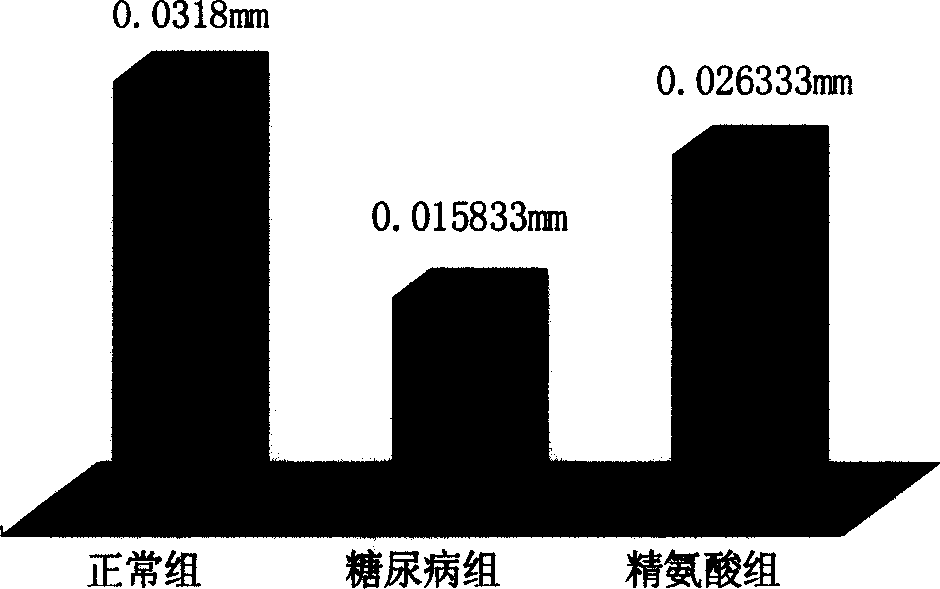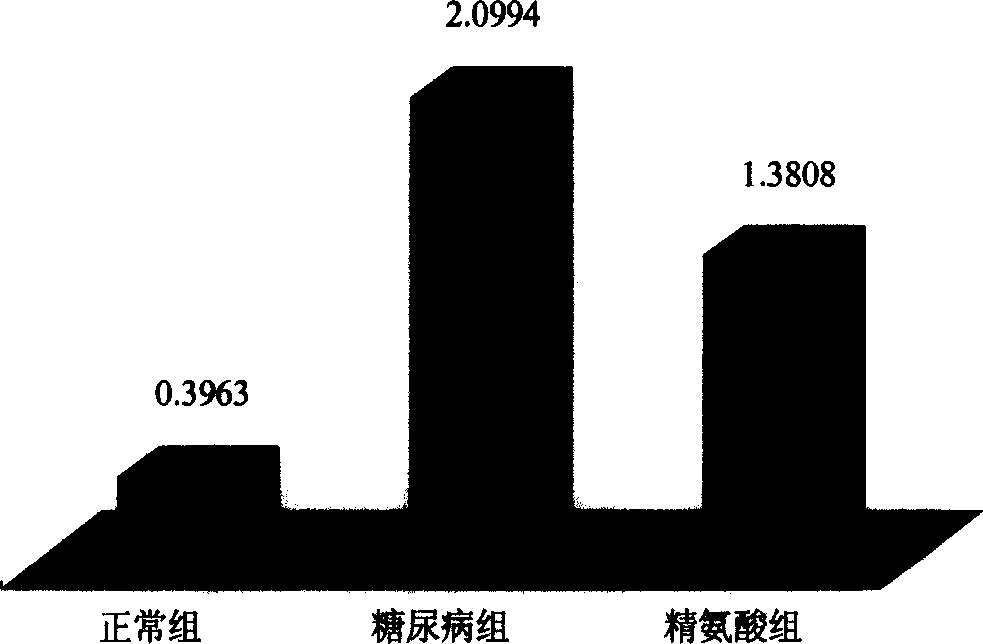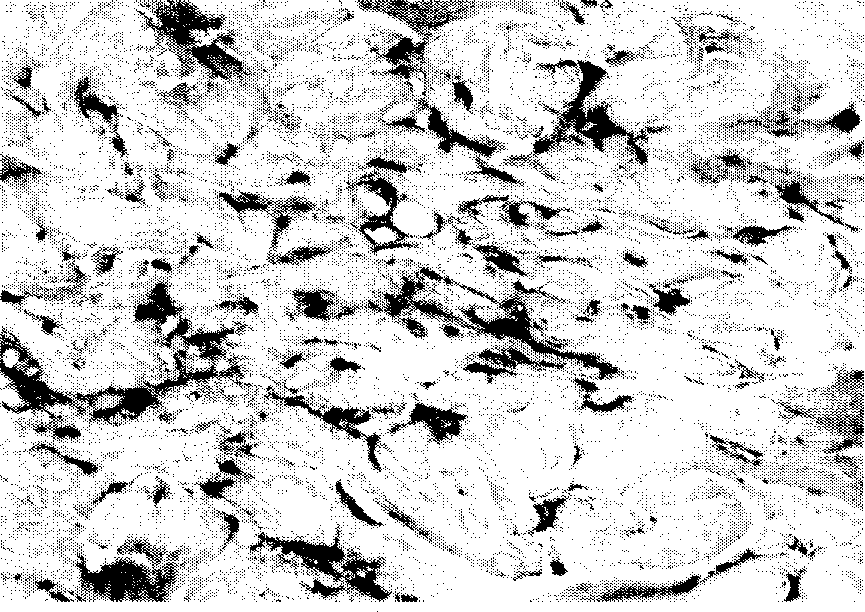Reforming effect of arginine to recessive harm of skin tissue of diabetic
A technology of arginine, diabetes, used in medicine and pharmacy
- Summary
- Abstract
- Description
- Claims
- Application Information
AI Technical Summary
Problems solved by technology
Method used
Image
Examples
Embodiment 1
[0059] Hidden Impairment Features of Diabetes
[0060] 1.1. Sugar content in skin tissue:
[0061] Methods: 26 rats were induced by intraperitoneal injection of streptozotocin (STZ) to form diabetic rats. Rats were sacrificed after induction for different time, and the sugar content in rat skin tissue was determined by biochemical method.
[0062] Results: The sugar content in skin tissue of diabetic rats killed 14 days after induction was 1.0699 mg / g skin tissue, and the sugar content in skin tissue of diabetic rats killed 8 weeks was 2.099 mg / g skin tissue, the difference between the two groups was significant (P<0.01 ); compared with normal rats (0.3963mg / g skin tissue), the sugar content in the skin tissue of diabetic rats was significantly increased (P<0.01).
[0063] 1.2. Detection of glycation end products in skin tissue:
[0064] Methods: The method was the same as 1.1, and the rats were sacrificed after 8 weeks of induction, and the end-glycosylation products in ra...
Embodiment 2
[0077] The therapeutic effect of arginine on hidden damage of diabetes mellitus
[0078] In this example, different doses of arginine were administered to diabetic rats by intragastric administration, and the dosage regimens were: 25 mg, 50 mg, 100 mg, 200 mg / Kg body weight. The rats were killed at different times after the administration, and the same methods as in Example 1 were used for various determinations.
[0079] 2.1. Determination of sugar content in skin tissue:
[0080] The result is as figure 2 shown. The sugar content in skin tissue of diabetic rats was 2.0994mg / g skin tissue, that of normal rats was 0.3963mg / g skin tissue, and that of diabetic rats treated with arginine was 1.3808mg / g skin tissue. Compared with the simple diabetes group, the sugar content in the skin tissue of diabetic rats treated with arginine was significantly lower (P figure 2 ).
[0081] 2.2. Effects on the proliferation cycle of epidermal cells:
[0082] The result is as Figure 5 s...
Embodiment 3
[0090] Pharmaceutical compositions containing arginine
[0091] In this example, a pharmaceutical composition containing arginine for oral administration was prepared, and the dosage form was granules.
[0092] Arginine Hydrochloride
PUM
 Login to View More
Login to View More Abstract
Description
Claims
Application Information
 Login to View More
Login to View More - R&D
- Intellectual Property
- Life Sciences
- Materials
- Tech Scout
- Unparalleled Data Quality
- Higher Quality Content
- 60% Fewer Hallucinations
Browse by: Latest US Patents, China's latest patents, Technical Efficacy Thesaurus, Application Domain, Technology Topic, Popular Technical Reports.
© 2025 PatSnap. All rights reserved.Legal|Privacy policy|Modern Slavery Act Transparency Statement|Sitemap|About US| Contact US: help@patsnap.com



